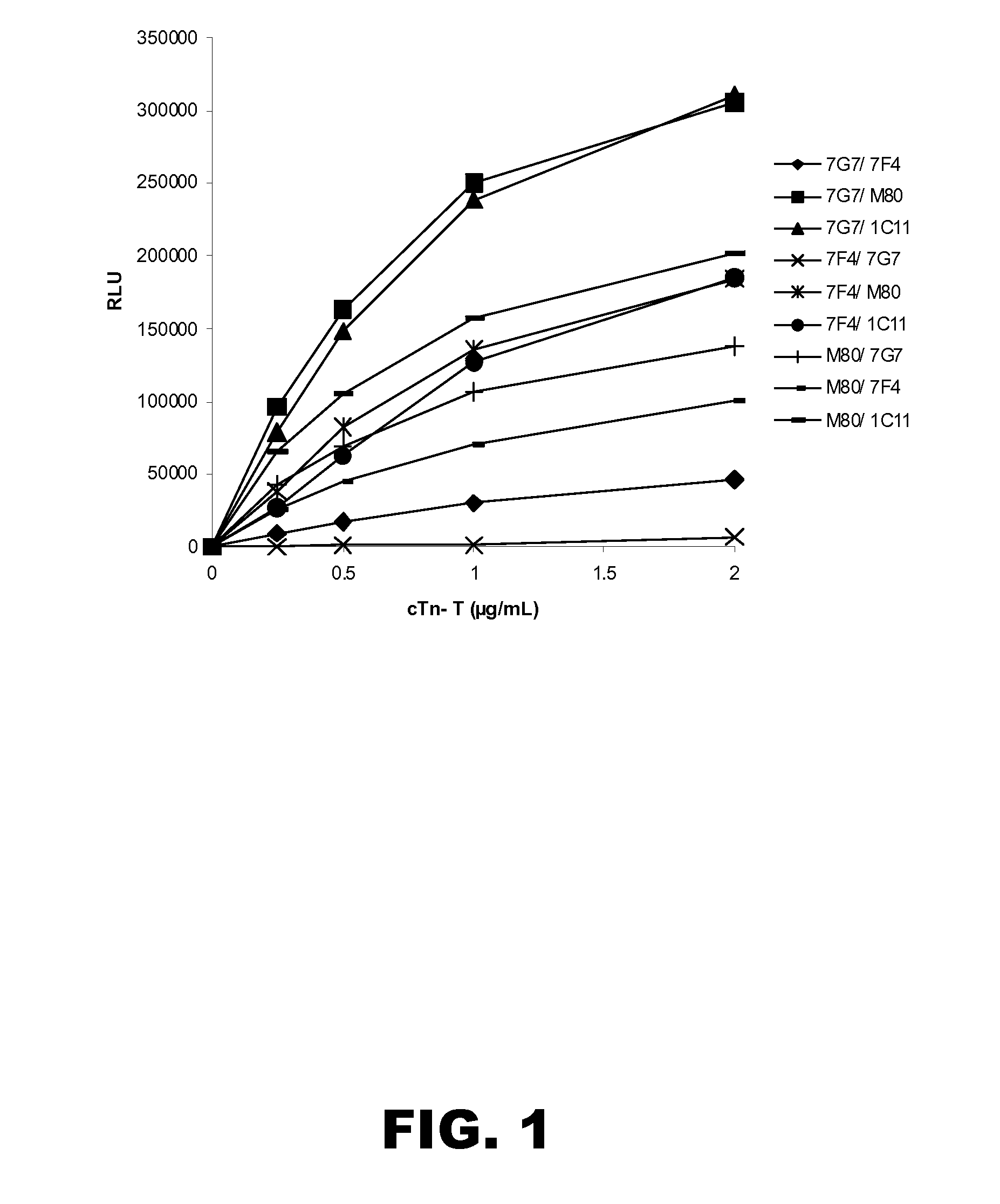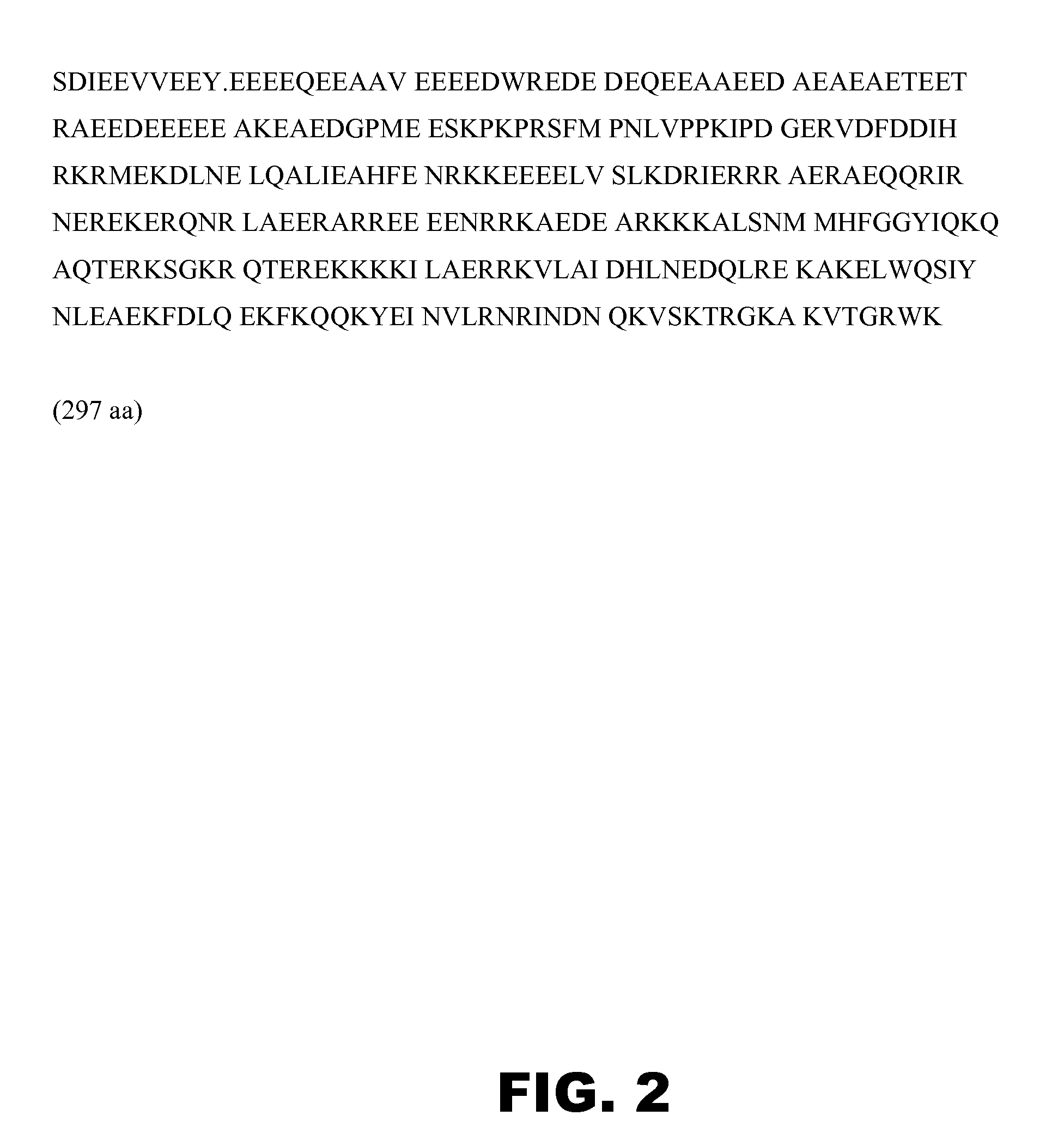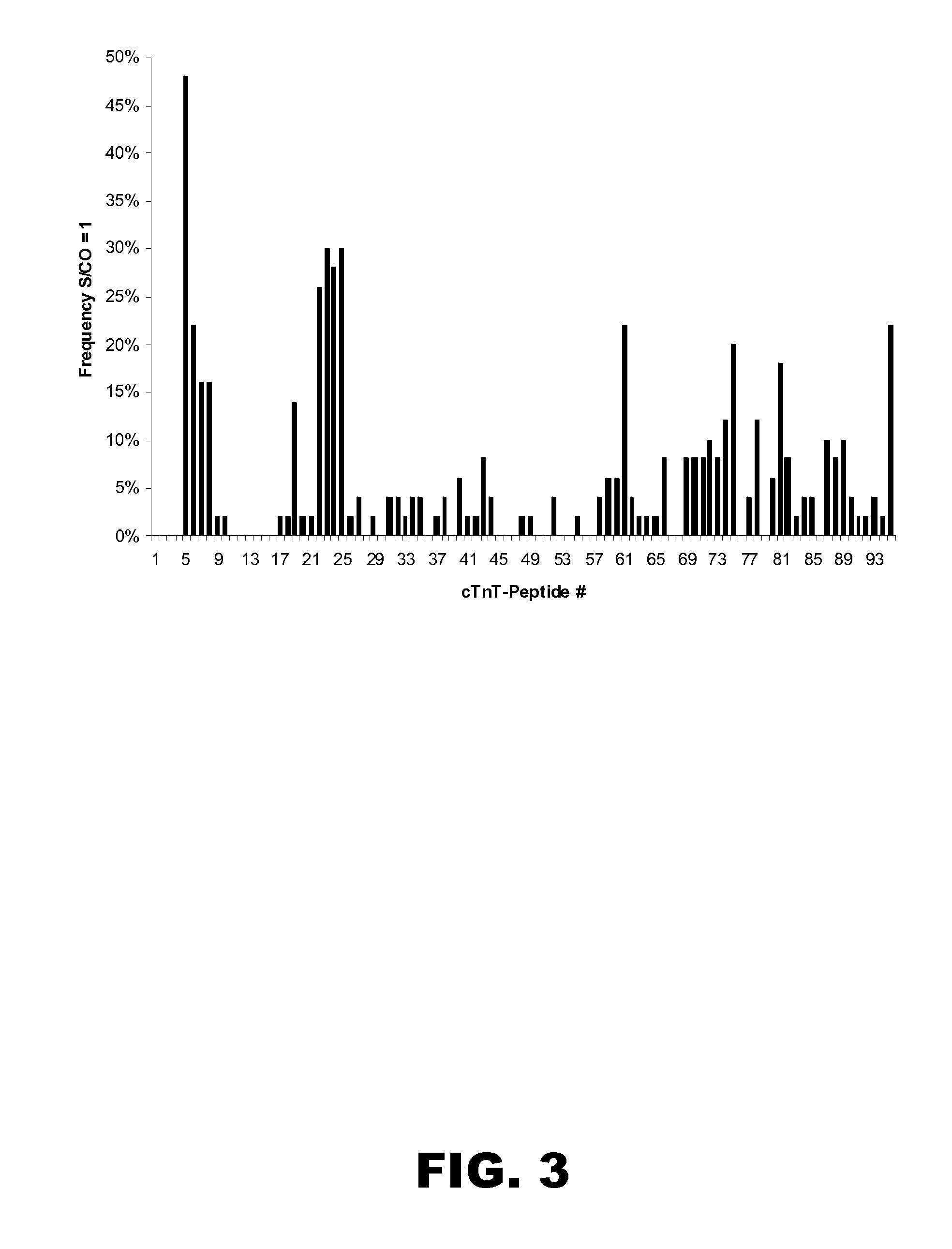ASSAY FOR CARDIAC TROPONIN-T (cTnT)
a troponin-i and autoantibodies technology, applied in the field of cardiac troponin-i detection kits, can solve the problems of cardiac troponin-i reactive autoantibodies, the detection of human and the assay for ctnt fails to address the problem of circulating endogenous antibodies, or “autoantibodies”, and the measurement of ctni is reportedly limited
- Summary
- Abstract
- Description
- Claims
- Application Information
AI Technical Summary
Benefits of technology
Problems solved by technology
Method used
Image
Examples
example 1
Detection Antibody Conjugates
[0180]General Conjugation Procedure: Detection antibody was dissolved in a conjugation buffer (100 mM sodium phosphate, 150 mM NaCl, pH 8.0) to give a concentration of 1-10 mg / mL (6.25-62.5 μM). Acridinium, 9-[[[4-[(2,5-dioxo-1-pyrrolidinyl)oxy]-4-oxobutyl][(4-methylphenyl)sulfonyl]amino]carbonyl]-10-(3-sulfopropyl)-, inner salt, 2 (Adamczyk, M.; Chen, Y.-Y.; Mattingly, P. G.; Pan, Y. J. Org. Chem. 1998, 63, 5636-5639) labeling reagent was prepared in N,N-dimethylformamide (DMF) at a concentration of 1-50 mM, as shown in formula 2 below:
[0181]The selected antibody was treated with the acridinium-labeling reagent in a molar excess of 1-35 fold for 3-14 h at ambient temperature in the dark. Afterwards, the acridinium-9-carboxamide-antibody conjugate solution was dialyzed at ambient temperature over 20 hours using a 10 kilodalton molecular weight cutoff membrane against three volumes (1000× conjugate solution volume) of a dialysis buffer consisting of 10 mM...
example 2
Capture Antibodies on Magnetic Microparticles
[0192]Carboxy paramagnetic microparticles (5% solids, nominally 5 micron diameter, Polymer Labs, Varian, Inc. Amherst, Mass.) were diluted to a concentration of 1% solids in 2-(N-morpholino)ethanesulfonic acid buffer (MES, 2 mL, pH 6.2, 50 mM) then washed with MES buffer (3×, 2 mL), and finally, resuspended in MES (2 mL). The particles were activated by mixing with 1-ethyl-3-[3-dimethylaminopropyl]carbodiimide hydrochloride (20 μL of 11 mg / 1.129 mL in water) for 20 min, then washed (MES, 2 mL) and re-suspended in MES (2 mL). Murine anti-cardiac troponin-T 1C11 (Fitzgerald Ind Intnl, Concord, Mass., cat no. 10R-T127D) was added to the suspension at 60 μg / mL. After mixing for 60 min the antigen coated particles were magnetically sequestered, and the antigen solution was replaced with a blocking solution consisting of 1% BSA in PBS (2 mL). After mixing for 30 min, the particles were washed with 1% BSA in PBS (3×, 2 mL) and finally, resuspend...
example 3
Chemiluminescent Immunoassay Dose-Response for Combinations of Capture and Detection Antibodies
[0194]A working suspension of each capture antibody microparticles prepared in Example 2 was prepared by dilution of the stock suspension to 0.05% solids in MES buffer (20 mM, pH 6.6) containing sucrose (13.6%) and antimicrobial agents. A working solution of each detection antibody conjugate was prepared by dilution of the stock solution to 10 ng / mL. Cardiac troponin-T (Biospacific, cat no. J34510359) standard solutions were prepared at 0, 0.25, 0.5, 1.0 and 2.0 μg / mL.
[0195]The assays were carried out on an ARCHITECT® i2000 instrument (Abbott Laboratories, Abbott Park, Ill.). Briefly, the cardiac troponin-T standard solution (10 μL) was diluted with ARCHITECT® PreIncubation Diluent (50 μL) and the capture antibody microparticles (50 μL) and incubated in the instrument reaction vessel. Following incubation, the microparticles were magnetically sequestered and washed with ARCHITECT® wash buf...
PUM
| Property | Measurement | Unit |
|---|---|---|
| molecular weight | aaaaa | aaaaa |
| molecular weight | aaaaa | aaaaa |
| molecular weight | aaaaa | aaaaa |
Abstract
Description
Claims
Application Information
 Login to View More
Login to View More - R&D
- Intellectual Property
- Life Sciences
- Materials
- Tech Scout
- Unparalleled Data Quality
- Higher Quality Content
- 60% Fewer Hallucinations
Browse by: Latest US Patents, China's latest patents, Technical Efficacy Thesaurus, Application Domain, Technology Topic, Popular Technical Reports.
© 2025 PatSnap. All rights reserved.Legal|Privacy policy|Modern Slavery Act Transparency Statement|Sitemap|About US| Contact US: help@patsnap.com



